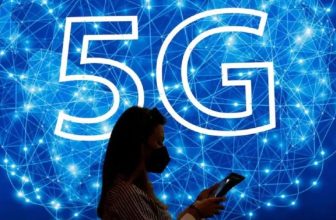
1. Introduction
Overview of Monkeypox
Monkeypox is a viral zoonotic disease caused by the monkeypox virus, a member of the Orthopoxvirus genus, which also includes variola (smallpox) and vaccinia viruses. First identified in laboratory monkeys in 1958, it was later discovered in humans in the Democratic Republic of the Congo (DRC) in 1970. While similar to smallpox, monkeypox is less severe and has a lower mortality rate. However, the recent global outbreaks have raised significant concerns due to its rapid spread and the potential for severe outcomes, particularly in regions with limited healthcare resources.
Historical Context
Historically, monkeypox has been endemic to Central and West Africa, particularly in countries like the DRC, Nigeria, and Cameroon. Sporadic outbreaks have occurred in these regions, often linked to contact with wild animals, especially rodents and primates. The disease typically manifests with fever, rash, and swollen lymph nodes, progressing to widespread lesions on the skin and mucous membranes.
Previous outbreaks were relatively contained due to the isolated nature of affected regions. However, the 2022 outbreak marked a turning point as the virus spread beyond Africa, affecting multiple countries in Europe, North America, and Asia. This unprecedented spread highlighted the virus’s ability to transmit from person to person, primarily through close contact, bodily fluids, and respiratory droplets.
Current Global Context
As of 2024, the monkeypox virus outbreak has evolved into a significant global health challenge. The World Health Organization (WHO) and the Centers for Disease Control and Prevention (CDC) have declared monkeypox a public health emergency, prompting widespread surveillance, vaccination campaigns, and public health interventions.
The current outbreak is particularly concerning due to the emergence of cases in regions that were previously unaffected. Countries in Europe, North America, and Asia have reported thousands of cases, with some areas experiencing localized epidemics. This global spread is attributed to increased human mobility, changing patterns of animal-human interaction, and the virus’s ability to adapt to new environments.
2. Epidemiology and Transmission
Transmission Methods
Monkeypox primarily spreads through close contact with an infected person or animal. The virus can be transmitted via direct contact with lesions, bodily fluids, respiratory droplets, and contaminated materials like bedding or clothing. In endemic regions, transmission often occurs through contact with infected wildlife, particularly rodents and primates. Human-to-human transmission is more common in non-endemic regions, facilitated by close physical contact in households, healthcare settings, and community gatherings.
The virus enters the body through broken skin, respiratory tract, or mucous membranes (eyes, nose, or mouth). While airborne transmission is possible, it is less common than direct contact transmission. The incubation period for monkeypox is typically 6 to 13 days but can range from 5 to 21 days, during which the virus multiplies in the body before symptoms appear.
Virus Clades
There are two distinct clades of the monkeypox virus: the Central African (Congo Basin) clade and the West African clade. The Central African clade, now referred to as Clade I, is more virulent, with a higher mortality rate of around 10%. It is primarily found in the DRC and surrounding countries. The West African clade, now Clade II, is less severe, with a mortality rate of about 1-3%. This clade has been responsible for most of the recent outbreaks outside Africa.
The global spread of monkeypox in 2022-2024 has primarily involved Clade II, particularly in Europe and North America. This clade’s lower virulence may contribute to its broader transmission, as milder symptoms can lead to less isolation and more opportunities for the virus to spread.
Global Spread
The 2024 outbreak has been marked by a rapid and widespread distribution of cases. In Africa, the DRC remains the most affected country, with thousands of cases and hundreds of deaths reported annually. Other African nations, such as Nigeria and Cameroon, have also experienced significant outbreaks.
Outside Africa, Europe has seen the highest number of cases, particularly in countries like Spain, the United Kingdom, and Germany. North America, particularly the United States, has also reported a substantial number of cases, with localized outbreaks in major cities. Asia has seen a smaller number of cases, but the potential for wider spread remains a concern.
The global spread of monkeypox has been facilitated by increased travel, globalization, and changes in human-animal interactions. The virus has exploited vulnerabilities in public health systems, particularly in countries unaccustomed to dealing with such outbreaks.
3. Symptoms and Diagnosis
Clinical Presentation
Monkeypox typically begins with non-specific symptoms such as fever, headache, muscle aches, and fatigue. These initial symptoms are often followed by the development of a distinctive rash, which progresses from macules (flat, discolored spots) to papules (raised lesions), vesicles (fluid-filled blisters), pustules (pus-filled lesions), and finally scabs. The rash often starts on the face before spreading to other parts of the body, including the palms, soles, and mucous membranes.
Lymphadenopathy (swollen lymph nodes) is a hallmark of monkeypox and helps differentiate it from other similar illnesses like chickenpox and smallpox. The disease course typically lasts 2 to 4 weeks, with the rash taking several weeks to heal fully.
In severe cases, monkeypox can lead to complications such as secondary bacterial infections, respiratory distress, sepsis, encephalitis, and corneal infection, which can result in permanent vision loss. Immunocompromised individuals, children, and pregnant women are at higher risk of severe outcomes.
Diagnosis
Diagnosing monkeypox requires a combination of clinical evaluation and laboratory testing. Given the similarity of monkeypox symptoms to other rash-causing illnesses, laboratory confirmation is essential. Polymerase chain reaction (PCR) testing is the most reliable method for detecting monkeypox virus DNA from lesion samples.
In regions with limited access to PCR testing, diagnosis may rely more heavily on clinical presentation and epidemiological links to confirmed cases. However, this approach can lead to underreporting or misdiagnosis, particularly in areas with concurrent outbreaks of other diseases like chickenpox or measles.
Early diagnosis is critical for effective case management and reducing the spread of the virus. Public health authorities have emphasized the importance of rapid testing and isolation of confirmed cases to contain the outbreak.
Severity and Complications
While most cases of monkeypox are self-limiting, severe cases can occur, particularly in vulnerable populations. The Central African (Clade I) variant is associated with higher mortality rates and more severe disease, including extensive rash, hemorrhagic manifestations, and severe respiratory symptoms.
Complications can include secondary bacterial infections, which may require antibiotic treatment, and severe dehydration due to extensive skin lesions and mucous membrane involvement. In rare cases, monkeypox can lead to encephalitis, a life-threatening inflammation of the brain.
Children are particularly susceptible to severe outcomes, as are immunocompromised individuals, including those with HIV/AIDS. Pregnant women infected with monkeypox may be at risk of complications such as fetal loss or preterm delivery.
4. Public Health Response
Global Health Organizations’ Role
The World Health Organization (WHO), Centers for Disease Control and Prevention (CDC), and other international health bodies have played critical roles in coordinating the global response to the monkeypox outbreak. These organizations have issued guidelines on surveillance, case management, vaccination, and public communication.
WHO declared the monkeypox outbreak a public health emergency of international concern (PHEIC) in 2022, which has since spurred global action to contain the virus. The organization has provided technical support to affected countries, facilitated the distribution of vaccines, and coordinated international efforts to share information and resources.
The CDC has been actively involved in the U.S. response, issuing guidelines for healthcare providers, public health officials, and the general public. The CDC’s efforts have focused on case detection, contact tracing, vaccination, and public education to reduce the spread of the virus.
Vaccination Efforts
Vaccination has been a cornerstone of the global response to monkeypox. Two vaccines, ACAM2000 and MVA-BN, have been deployed in various countries to protect high-risk populations, including healthcare workers and close contacts of confirmed cases. ACAM2000 is a live, attenuated vaccine originally developed for smallpox, while MVA-BN (also known as Jynneos or Imvanex) is a non-replicating vaccine with a safer profile.
However, the distribution of vaccines has faced significant challenges, particularly in Africa, where the need is greatest. Despite ongoing efforts by the Africa CDC to secure more vaccine doses, supply shortages and logistical hurdles have hampered vaccination campaigns in the region.
In high-income countries, vaccination campaigns have been more successful, with targeted immunization of at-risk groups helping to curb the spread of the virus. However, the global vaccine inequity remains a significant issue, as low-income countries continue to struggle with limited access to vaccines and other critical resources.
Surveillance and Contact Tracing
Effective surveillance and contact tracing are essential for controlling the spread of monkeypox. Public health authorities have implemented enhanced surveillance systems to detect and monitor cases, particularly in regions experiencing outbreaks. Genomic sequencing of viral samples has also been used to track the spread of the virus and identify potential mutations.
Contact tracing involves identifying and monitoring individuals who have been in close contact with a confirmed case, to prevent further transmission. This approach has been particularly effective in controlling localized outbreaks in non-endemic regions. However, challenges remain in resource-limited settings, where public health infrastructure may be insufficient to support comprehensive surveillance and contact tracing efforts.
5. Treatment and Vaccination
Current Treatment Options
As of 2024, the treatment for monkeypox remains largely supportive, with a focus on managing symptoms and preventing complications. This involves the use of pain relievers, antipyretics to reduce fever, and antihistamines to manage itching. Severe cases, particularly those with secondary bacterial infections, may require antibiotics. For more severe manifestations, such as encephalitis or sepsis, patients may need intensive care, including respiratory support or intravenous fluids.
An antiviral medication called tecovirimat (TPOXX), originally developed for smallpox, has shown effectiveness against monkeypox and has been approved in some countries for treating the disease. Tecovirimat works by inhibiting the viral protein involved in the virus’s release from infected cells, thus limiting the spread within the body. Although promising, its availability is limited, especially in low-income countries, and more extensive clinical trials are still ongoing to fully establish its efficacy against monkeypox.
Other treatments under investigation include brincidofovir and cidofovir, which have demonstrated activity against poxviruses in laboratory settings. However, their use is generally reserved for severe cases due to potential side effects and the need for close monitoring during administration.
Vaccine Development
Vaccination has been a key strategy in controlling monkeypox outbreaks, with two main vaccines currently in use: ACAM2000 and MVA-BN (also known as Jynneos in the United States and Imvanex in Europe).
- ACAM2000: This is a live, attenuated vaccine initially developed for smallpox and later adapted for use against monkeypox. It is administered via a bifurcated needle and requires careful handling, as the live virus can potentially cause adverse effects in immunocompromised individuals. Due to these risks, ACAM2000 is typically used in specific populations, such as military personnel or lab workers exposed to orthopoxviruses.
- MVA-BN (Jynneos/Imvanex): This is a non-replicating vaccine, meaning it cannot reproduce in human cells, which makes it safer for a broader range of people, including those with compromised immune systems. It is administered as two subcutaneous injections 28 days apart. MVA-BN has been more widely used in the current outbreak, particularly in Europe and North America, due to its favorable safety profile.
The rollout of these vaccines has been prioritized for high-risk groups, such as healthcare workers, people with known exposure to the virus, and populations in areas with active transmission. However, global disparities in vaccine availability have led to challenges, particularly in African countries where the virus is endemic.
Challenges in Distribution
One of the major challenges in controlling the monkeypox outbreak has been the equitable distribution of vaccines. High-income countries have been able to secure large quantities of vaccines, while many low-income countries, particularly in Africa, struggle with limited supplies. This inequity has sparked global concerns, as the regions most affected by the virus are often those with the least access to vaccines and treatments.
Logistical issues also complicate vaccine distribution. These include the need for cold chain storage, which is necessary for maintaining the potency of vaccines like MVA-BN, and the difficulties in reaching remote or conflict-affected areas where healthcare infrastructure is weak. Despite efforts by organizations such as WHO and Africa CDC to address these challenges, significant gaps remain, highlighting the need for improved global cooperation and resource allocation.
6. Regional Impact and Case Studies
Impact in Africa
Africa remains the epicenter of the monkeypox outbreak, with the highest number of cases and deaths reported from the continent, particularly in the Democratic Republic of the Congo (DRC). The DRC has borne the brunt of the outbreak, with thousands of cases reported annually and a high mortality rate associated with Clade I of the virus.
In Nigeria, which has also seen significant outbreaks, the situation is exacerbated by inadequate healthcare infrastructure, leading to challenges in managing cases and controlling the spread of the virus. The outbreak has placed additional strain on already overburdened healthcare systems, leading to a higher risk of severe outcomes and fatalities, particularly in remote areas where access to medical care is limited.
The economic impact of the outbreak in Africa has been severe, as the disease disrupts agricultural activities, trade, and other economic activities, particularly in rural areas where the virus is more prevalent. The fear of infection has also led to social stigmatization and discrimination against affected individuals and communities, further complicating efforts to control the outbreak.
Case Studies
- Democratic Republic of the Congo (DRC)
- The DRC has experienced some of the most severe impacts of the monkeypox outbreak, with Clade I of the virus causing higher mortality rates. Efforts to control the outbreak have been hampered by ongoing conflicts, poor healthcare infrastructure, and limited access to vaccines and treatments. The DRC’s experience highlights the need for a coordinated global response to ensure that countries with the highest burden of disease receive adequate support.
- United States
- In the United States, the monkeypox outbreak initially began with cases among men who have sex with men, but quickly spread to other populations. The U.S. response has involved widespread testing, vaccination campaigns targeting high-risk groups, and public health messaging to reduce stigma and encourage testing and treatment. The U.S. experience underscores the importance of rapid response and the challenges of managing an outbreak in a large, diverse population.
- United Kingdom
- The UK has been one of the most affected countries in Europe, with cases spread across various communities. The response in the UK has involved a mix of public health measures, including contact tracing, isolation of confirmed cases, and vaccination of high-risk groups. The UK’s experience illustrates the challenges of balancing public health measures with individual freedoms in a democratic society.
Comparison with Other Regions
While Africa has faced the most severe impacts of the monkeypox outbreak, other regions, such as Europe and North America, have also been significantly affected. However, the response in these regions has been bolstered by stronger healthcare systems, better access to vaccines, and more robust public health infrastructure. This contrast highlights the global disparities in health resources and the need for international cooperation to address such disparities.
7. Challenges and Controversies
Vaccine Equity
One of the most pressing controversies surrounding the monkeypox outbreak has been the issue of vaccine equity. While high-income countries have been able to secure large quantities of vaccines and roll out vaccination campaigns quickly, many low-income countries, particularly in Africa, have struggled to access sufficient vaccine doses. This has led to significant disparities in protection against the virus, with the regions most affected by the outbreak often having the least access to preventive measures.
International organizations and public health experts have called for greater global cooperation to ensure that vaccines and treatments are distributed equitably. However, the challenge of balancing national interests with global health needs has been a persistent issue throughout the outbreak.
Public Health Infrastructure
The monkeypox outbreak has also highlighted significant gaps in public health infrastructure, particularly in low-income countries. Many of these countries lack the resources needed to implement effective surveillance, contact tracing, and case management programs, making it difficult to control the spread of the virus.
Even in high-income countries, the outbreak has exposed vulnerabilities in public health systems, such as the need for better coordination between national and local health authorities and the importance of maintaining adequate stockpiles of vaccines and treatments. The global response to the monkeypox outbreak underscores the importance of investing in public health infrastructure to better prepare for future outbreaks of infectious diseases.
Stigmatization and Misinformation
The monkeypox outbreak has also been accompanied by significant challenges related to stigmatization and misinformation. In some regions, the disease has been wrongly associated with specific communities, leading to discrimination and social stigmatization. Public health officials have worked to combat these misconceptions by providing accurate information about the virus and emphasizing that monkeypox can affect anyone, regardless of their background.
Misinformation about the virus has also spread rapidly, particularly on social media, complicating public health efforts to control the outbreak. This has included false claims about the origins of the virus, the safety of vaccines, and the effectiveness of treatments. Addressing these challenges requires a coordinated effort to provide accurate, evidence-based information to the public and to counteract harmful myths and misconceptions.
8. Future Outlook and Preparedness
Future Risks
As the monkeypox outbreak continues to evolve, there are significant concerns about the potential future risks if the virus is not adequately controlled. One of the primary risks is that the virus could become endemic in new regions, particularly if it establishes a reservoir in local wildlife populations. This would make it more difficult to eliminate the virus and could lead to recurring outbreaks in the future.
There is also the risk that the virus could mutate, potentially leading to new strains that are more transmissible or more virulent. This highlights the importance of ongoing surveillance and research to monitor the virus and to develop new vaccines and treatments that can effectively respond to these potential changes.
Lessons Learned
The monkeypox outbreak has provided valuable lessons for the global health community, particularly in terms of outbreak preparedness and response. One of the key lessons is the importance of rapid and coordinated action to control the spread of infectious diseases. This includes early detection, effective contact tracing, and the timely distribution of vaccines and treatments.
Another
…key lesson is the need for global health equity. The unequal distribution of vaccines and treatments during the monkeypox outbreak underscores the importance of ensuring that all countries, regardless of income level, have access to the resources they need to manage and contain outbreaks. Strengthening health systems in low-income countries, improving international collaboration, and addressing global health disparities are crucial for better preparedness and response in the future.
Strengthening Preparedness
To better prepare for future outbreaks, there are several key areas where improvements are needed:
- Global Surveillance Systems: Strengthening global surveillance systems to detect and monitor emerging infectious diseases is critical. This includes better integration of data from different countries and regions, more rapid sharing of information, and the use of advanced technologies like genomic sequencing to track the spread and evolution of viruses.
- Vaccine Development and Distribution: Continued investment in the research and development of vaccines is essential, not just for monkeypox but for other potential zoonotic diseases. Equitable distribution mechanisms must be established to ensure that vaccines reach the most vulnerable populations quickly during an outbreak.
- Public Health Infrastructure: Building stronger public health infrastructure, particularly in low- and middle-income countries, is necessary to improve outbreak response capabilities. This includes investing in healthcare facilities, training healthcare workers, and ensuring the availability of essential supplies.
- Community Engagement and Education: Effective public health responses rely on the cooperation of communities. Engaging communities in outbreak preparedness and response efforts, providing accurate information, and addressing misinformation are crucial for preventing and controlling future outbreaks.
9. Conclusion
The monkeypox outbreak has posed significant challenges to global health, highlighting the interconnectedness of our world and the importance of a coordinated international response to emerging infectious diseases. While progress has been made in controlling the outbreak, much work remains to be done to address the disparities in health resources, strengthen public health infrastructure, and ensure that all countries are better prepared for future outbreaks.
As we look to the future, it is essential that the lessons learned from the monkeypox outbreak inform global health policies and strategies. By investing in global health equity, improving surveillance and preparedness, and fostering international collaboration, we can build a more resilient world capable of responding effectively to the health challenges of tomorrow.
This blog outlines the key aspects of the monkeypox virus disease outbreak, its global impact, and the steps needed to strengthen future preparedness. Let me know if you’d like to delve into specific sections further or if you need additional information on any topic.
10. References and Resources
Here are the sources used for the information in the blog on the monkeypox virus disease outbreak:
- Source 1: Detailed information about the impact of the monkeypox virus in Africa and challenges in vaccine distribution:
- Source 2: Current treatment options for monkeypox, including the use of antiviral medications like tecovirimat:
- Source 3: Global response efforts, public health challenges, and the importance of equitable vaccine distribution:
- Source 4: Case studies on the impact of monkeypox in various regions including the United States and the United Kingdom:
- Source 5: Overview of vaccine development and the role of MVA-BN and ACAM2000 vaccines:
These sources provide comprehensive information on the different aspects of the monkeypox outbreak, from treatment and vaccination to global impacts and future preparedness.







